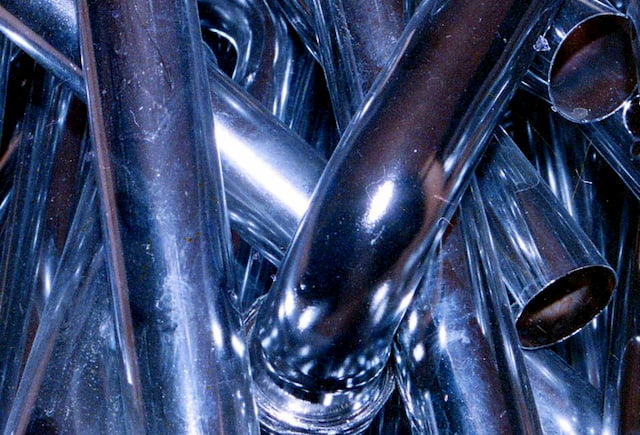Tube bending is one of the most common forming processes when it comes to manufacturing metal parts for different industries. In fact, tube bending is considered the main operation to form tubing and piping as the final product or as part of a system. However, there are some aspects to consider before performing this operation.
Properties to Consider for Tube Bending
- Yield strength. The machinery has to be capable of performing the bend. The required force depends largely on the type of steel and its yield strength.
- Wall thickness. When bending tubes and pipes, the thickness changes in the inner and outer walls of the bend. The inner wall becomes thicker while the outer wall becomes thinner. Some machines provide support to avoid problems with the cross-section, such as wrinkles in the inner wall. If support is not provided, care must be taken to prevent these changes in thickness from becoming a problem.
- Bend radius. Suppliers normally provide recommendations for the minimum achievable radius without compromising the integrity of the pipe. It depends on the type of material. Reaching this minimum requires attention and expertise.

- Bend radius vs wall thickness. There is a relation between the minimum bend radius that can be achieved and the thickness of the wall. This is important because the tubes and pipes can fail when the radius is too small compared to the wall thickness.
- Material elongation value. Elongation can be described as the difference between the yield strength and the ultimate tensile strength of the material. A big difference means a big elongation, which results in better formability properties.
Steel Tube Bending
Steel is one of the most popular metals in the manufacturing industry, with carbon steels and stainless steels on the top of the list.
Carbon steel tubes and pipes are common because of their strength and formability. Also, carbon steel is cheaper, which makes it the right choice when there are no other specific requirements, such as a higher corrosion resistance or demanding operation conditions that may include very high pressures and temperatures.
Other important properties of this material include:
- Low melting point.
- High malleability.
- High durability.
- Good heat distribution.
Due to the properties described before, carbon steel pipes are used in many different applications. Examples include conveying low-pressure fluids, machinery, sprinklers, electrical conduits and light gauge steel products, among others.
On the other hand, stainless steel tubes and pipes are useful in places where corrosion is imminent. This material provides great resistance to the unavoidable chemical process.
- Personal account manager
- Quality assurance
- Payment terms for companies
- On-time delivery by Fractory
Tips for Bending Steel Tubes
However, there is some troubleshooting to do when performing steel tube bending.
- Bends often require achieving a tight radius. Since the outer wall of the bend becomes thinner, the result may be a distorted bend. To prevent this, using a mandrel to give support is recommended. That is also why press or ram bending is not recommended in these situations. The most adequate bending method would be mandrel bending, which is the same as rotary draw bending, but adding a mandrel to support the inside of the pipe.
ARVE error: url: https://www.googleapis.com/youtube/v3/videos?part=snippet%2Cstatistics&id=G9z2pAmk3XI&key=AIzaSyAQ7WFzTAUrOX-FjsIrFS3JwZBFzgIvloc Status code 200 expected but was 403.
- Sometimes the radius we need to achieve makes the steel to exceed its elastic limits. It can result in deformation in the form of a hump or wrinkles. To prevent the formation of humps and wrinkles, it is recommended to use rotary draw bending or three roll bending.
- When bending stainless steel tubes and pipes, it is important to remember that some of the stainless steels require around 50% more power for bending than carbon steels. Therefore, that the machinery must be set accordingly.
Bending Aluminium Tubing
Similar to what happens with the different types of steel, the choice of aluminium tubing depends mainly on the application. The possibilities to obtain high-quality results when bending aluminium tubing depend on many factors.
One of those factors is the grade of aluminium. The purest aluminium grades present almost no problems to any forming process. These aluminium pipes are very soft and easy to bend. Most importantly, they have great ductility and workability. Compromising their integrity during the bending process is not much of an issue.
This said, there are aluminium alloys with properties that make them a better option for bending tubing and for more specific applications.
Based on the properties described before, these aluminium grades are perfect for pipe bending:
- 3003 series.
- 5052 series.
- 6061 series.
When bending aluminium tubing, we find similar problems like we did with carbon and stainless steels, so the recommendations are very similar.
However, those problems are more difficult to prevent for some type of thin-walled aluminium tubes and pipes. If wrinkles and/or flattening still appears with these aluminium tubes and pipes, sand-packing techniques may be used. Filling the tubes and pipes with sand or any other non-compressible material and capping the ends before performing the bend.
Also, it is important that your manufacturer has the right tube bending machines.
Looking to bend and laser cut tubes? We are here to help you!




